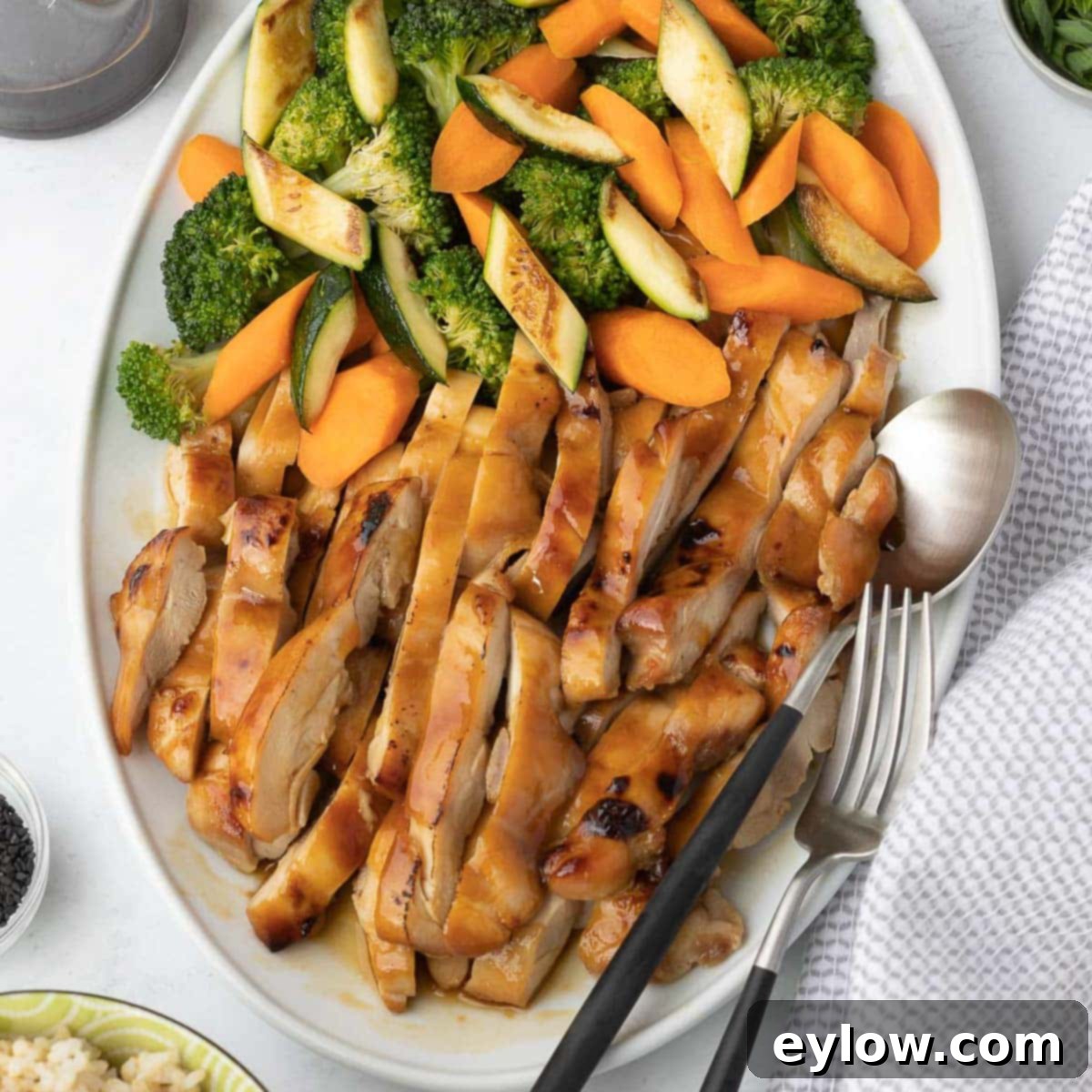Delicious & Easy Baked Teriyaki Chicken Thighs: Your Ultimate Weeknight Meal
Say goodbye to greasy takeout and hello to a homemade delight! These easy baked teriyaki chicken thighs are a flavor powerhouse, simple enough for any weeknight dinner. The secret lies in our quick-to-make homemade teriyaki sauce, whipped up in minutes with just a few staple pantry ingredients. You’ll marinate the chicken to infuse it with rich flavor, bake it to perfection, and then brush it with extra sauce for that irresistible glossy, caramelized finish. Serve these succulent thighs with fluffy rice and quick-sautéed vegetables for a wholesome meal, or opt for a lighter touch with a vibrant, crunchy salad. For those with dietary considerations, simply swap in tamari for traditional soy sauce to make this recipe naturally gluten-free, or choose a soy-free tamari if you avoid soy entirely. This recipe promises a restaurant-quality meal right in your kitchen, offering both exceptional taste and peace of mind about your ingredients.
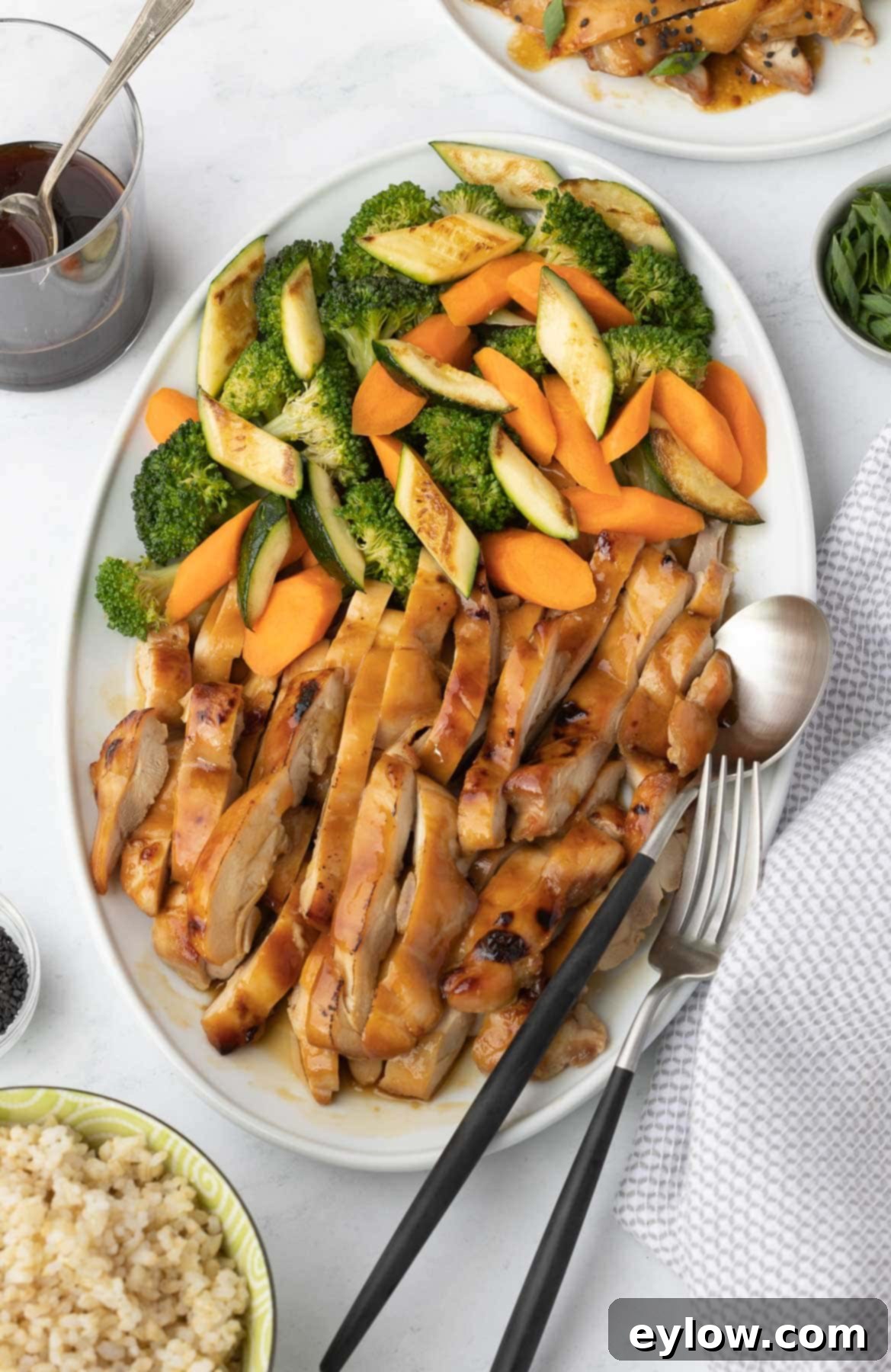
While traditional Japanese teriyaki sauce is often characterized by its light consistency and simple blend of soy sauce, mirin, and sugar, Western-style teriyaki typically features a thicker, more robust profile. This version is frequently enhanced with aromatic ingredients like garlic and ginger. The thinner, traditional sauce works wonderfully as a quick marinade, but our thicker, Western-inspired rendition is truly versatile. It excels not only for deep marinating but also for glazing, basting, and serving as a rich dipping sauce, perfectly complementing these tender teriyaki chicken thighs. This recipe provides a delightful balance, marrying authentic flavors with a consistency that truly coats and clings to the chicken, ensuring every bite is bursting with taste.
Why You’ll Adore This Teriyaki Chicken Thigh Recipe
There are countless reasons why these teriyaki chicken thighs will become a staple in your meal rotation. Beyond their incredible flavor, they offer convenience, health benefits, and universal appeal:
- Homemade Beats Takeout Every Time: When you prepare teriyaki chicken at home, you gain complete control over the ingredients. This means a fresher, cleaner, and ultimately more flavorful dish. You can avoid the excessive sodium, hidden sugars, corn syrup, MSG, and preservatives often found in store-bought sauces and restaurant dishes, ensuring a healthier meal for your family.
- A Family-Friendly Favorite: This recipe is a guaranteed crowd-pleaser for all ages. Its sweet and savory notes, coupled with tender chicken, make it appealing even to picky eaters. Plus, it’s straightforward enough to whip up on a busy weeknight, making dinner prep stress-free.
- Effortlessly Create a Balanced Meal: These teriyaki chicken thighs serve as the perfect centerpiece for a well-rounded dinner. Simply add a side of steamed brown or white rice and your favorite quick-sautéed or roasted vegetables, and you have a complete, nutritious meal ready in under an hour.
- Naturally Gluten-Free & Allergy-Friendly: With a simple swap from traditional soy sauce to tamari, your homemade teriyaki sauce becomes entirely gluten-free. For those with soy sensitivities, soy-free tamari is an excellent alternative, ensuring everyone can enjoy this delicious dish without compromise.
If you’re looking to explore more Asian-inspired flavors, don’t miss this fantastic homemade gluten-free Hoisin sauce, another versatile condiment that elevates any dish.
Gather Your Ingredients: What You’ll Need
Crafting these delectable teriyaki chicken thighs requires a handful of fresh ingredients and pantry staples. The beauty of this recipe is its simplicity and the vibrant flavors that come together effortlessly.
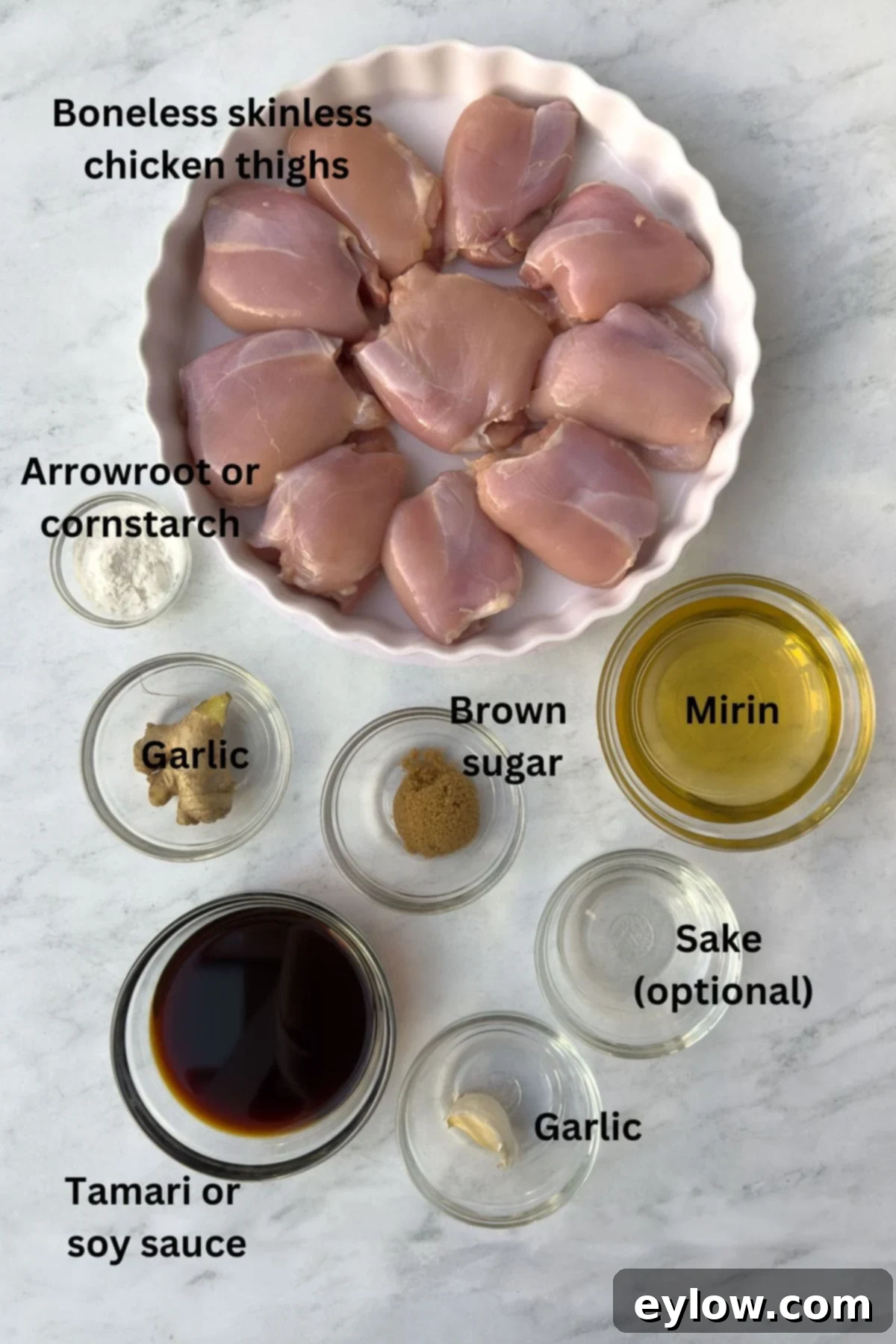
The Star of the Show: Chicken Thighs
- Chicken: For unparalleled moistness, rich flavor, and incredibly tender results, boneless, skinless chicken thighs are the superior choice. Dark meat naturally retains more moisture during cooking, preventing the dryness often associated with lean chicken breasts. If you’ve always gravitated towards white meat, this teriyaki chicken recipe is poised to convert you with its juicy, succulent texture. Trim any excess fat for a cleaner finish.
- Green Onions: Thinly sliced diagonally, fresh green onions add a vibrant pop of color and a mild, oniony bite, serving as the perfect garnish to elevate the dish both visually and in terms of fresh flavor. (Optional, but highly recommended!)
Crafting the Perfect Teriyaki Sauce and Marinade
Our homemade teriyaki sauce is the heart of this recipe, providing both the marinade and the glossy glaze. It’s incredibly easy to prepare and uses readily available ingredients:
- Soy Sauce: This forms the savory base of our teriyaki. For a gluten-free version, always opt for low-sodium tamari, which is a wheat-free soy sauce. Regardless of your choice, selecting a low-sodium variety is crucial for controlling the saltiness. This recipe was perfected using a 25% less sodium tamari, but for further sodium reduction, a 50% less sodium tamari is also available.
- Mirin: An indispensable ingredient in Japanese cuisine, mirin is a syrupy, low-alcohol Japanese cooking wine made from fermented rice. Its distinctive subtle sweetness not only contributes a delicious depth of flavor but also creates that signature glossy, caramelized finish on the teriyaki chicken thighs. Using real, high-quality mirin is essential for the best possible results.
- Sugar: Golden brown sugar is preferred for its molasses notes, which add a richer caramel flavor. However, white granulated sugar works perfectly well. For a lower-sugar option, a monk fruit blend can be used. The sugar is vital for the sauce’s characteristic sweetness and aids in achieving that beautiful, sticky glaze.
- Ginger: Fresh ginger is a cornerstone spice in Japanese cooking, imparting a warm, zesty, and slightly pungent aroma. Use a knob of fresh ginger, which can be easily peeled and then finely zested with a microplane or chopped. Small y-peelers are fantastic tools for peeling ginger efficiently.
- Garlic: Fresh garlic adds a pungent, aromatic depth that beautifully complements the other flavors. Finely chop or zest it with a microplane to ensure it disperses evenly throughout the sauce.
- Sake: Japanese rice wine. While optional, a touch of dry sake adds another layer of authentic Japanese flavor and complexity to the sauce. Inexpensive small bottles of dry sake are often available in the international aisle of larger grocery stores or specialty markets.
For precise measurements and the complete recipe, please refer to the detailed recipe card provided below.
Chef’s Tip: The Importance of Real Mirin! The quality of your mirin significantly impacts the flavor of your teriyaki sauce. Many supermarkets carry “aji-mirin,” which, despite its name, is not true mirin. “Aji-mirin” means “tastes like mirin” but is often a blend of glucose syrup, corn syrup, and other additives—essentially a fake substitute. This is akin to comparing genuine maple syrup to corn syrup flavored to taste like maple. There’s simply no comparison in terms of depth and authenticity. I highly recommend using a brand like Eden Foods mirin, which uses high-quality, traditional ingredients. You can typically find authentic mirin at better-stocked grocery stores, Asian specialty markets, or through online retailers.
Flexible Flavors: Substitutions and Variations
While the recipe calls for specific ingredients for optimal flavor, don’t hesitate to adapt based on what you have on hand or your dietary preferences. Here are several popular substitutions and variations to customize your teriyaki chicken thighs:
- Mirin Substitute 1: Sake with Sweetener: If authentic mirin is unavailable, you can achieve a similar flavor profile using Japanese rice wine (sake) combined with a sweetener. For every quarter cup of mirin, use the same amount of sake and add 1 tablespoon of sugar, monk fruit blend, or honey. This combination mimics mirin’s mild sweetness and alcoholic depth.
- Mirin Substitute 2: Unseasoned Rice Vinegar with Sweetener: Unseasoned rice vinegar can also work as a mirin substitute, but it’s more acidic. To balance this, you’ll need to add a touch more sweetness. Combine ¼ cup of rice vinegar with 1-2 tablespoons of sugar, monk fruit, or honey to taste. While the flavor will be slightly different, it provides a good acidic and sweet balance. For a comprehensive guide on mirin alternatives, check out this informative article on substitutions for mirin.
- For Sesame Teriyaki: To introduce a nutty, aromatic dimension, add 1 to 2 tablespoons of toasted sesame oil to your teriyaki sauce mixture before cooking. Garnish the finished dish generously with toasted sesame seeds just before serving for an extra layer of texture and flavor.
- For Honey Teriyaki: If you prefer the distinct taste of honey, you have two options. You can either completely replace the brown sugar with a mild-flavored honey, or add 1-2 tablespoons of honey in addition to the brown sugar for an extra touch of sweetness and a rich, golden hue.
- If You Prefer White Meat: While boneless, skinless chicken thighs are recommended for their inherent juiciness, you can certainly use boneless, skinless chicken breasts. For the best results, gently pound the chicken breasts to an even thickness (about ¾ inch) before marinating and baking. This promotes even cooking and prevents drying out. Be mindful that chicken breasts cook more quickly than thighs, so monitor your cook time closely. They are done when an internal temperature of 160°F-165°F is reached. However, I truly encourage you to trust me and try dark meat chicken with this recipe – it just might change your mind!
Prefer grilled teriyaki chicken? This recipe adapts beautifully to the grill. Cut the chicken thighs into large, uniform chunks, thread them onto skewers, and grill them over medium-high heat until cooked through and nicely charred. They turn out wonderfully juicy and flavorful. If you enjoy grilling chicken, you might also love these grilled chicken breasts with a refreshing lemon mint marinade.
Step-by-Step Recipe Instructions
The journey to delicious teriyaki chicken thighs begins with the sauce. First, prepare the homemade teriyaki sauce and allow it to cool completely. Once cool, transfer your chicken thighs to a resealable plastic bag or a shallow baking dish and marinate for at least an hour, or ideally, overnight for maximum flavor penetration.
Pro Tip: You can easily make your teriyaki sauce a day in advance and store it in the refrigerator to save precious time on your cooking day.
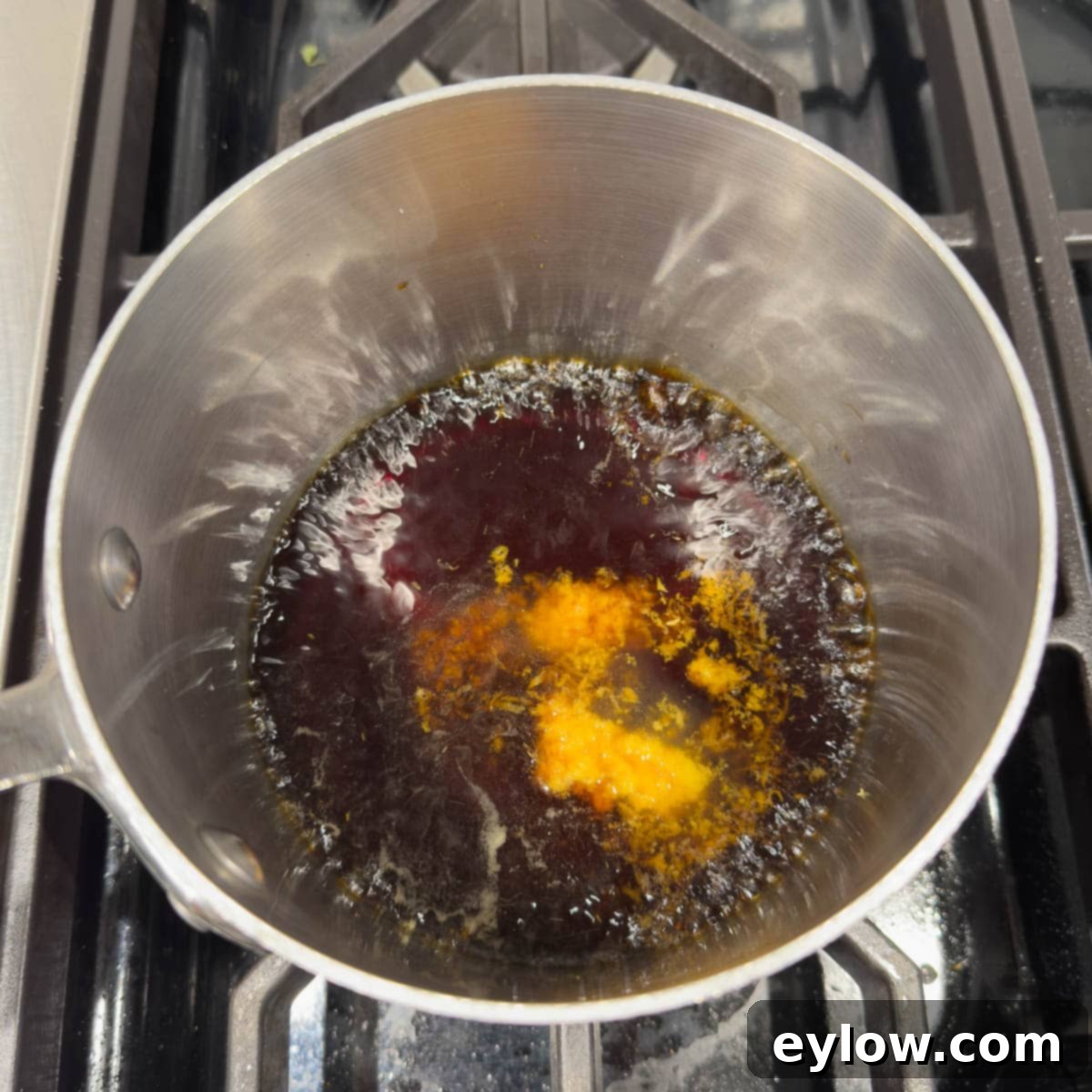
- Step 1: Combine all teriyaki sauce ingredients (soy sauce/tamari, mirin, brown sugar, sake, ginger, garlic) into a small 2-quart saucepan. Bring the mixture to a gentle simmer over medium heat. While the sauce is heating, prepare a slurry by whisking cornstarch (or arrowroot starch) with an equal amount of cold water in a small bowl until completely smooth and lump-free.

- Step 2: Once the teriyaki sauce reaches a simmer, slowly whisk in the prepared slurry. Continue whisking continuously for 1-2 minutes. This step is crucial for thickening the sauce to a beautiful, luscious consistency and cooking out any raw starch flavor. Adjust the heat as needed to maintain a gentle simmer.

- Step 3: You now have a perfectly thickened teriyaki sauce, ready for the next step.
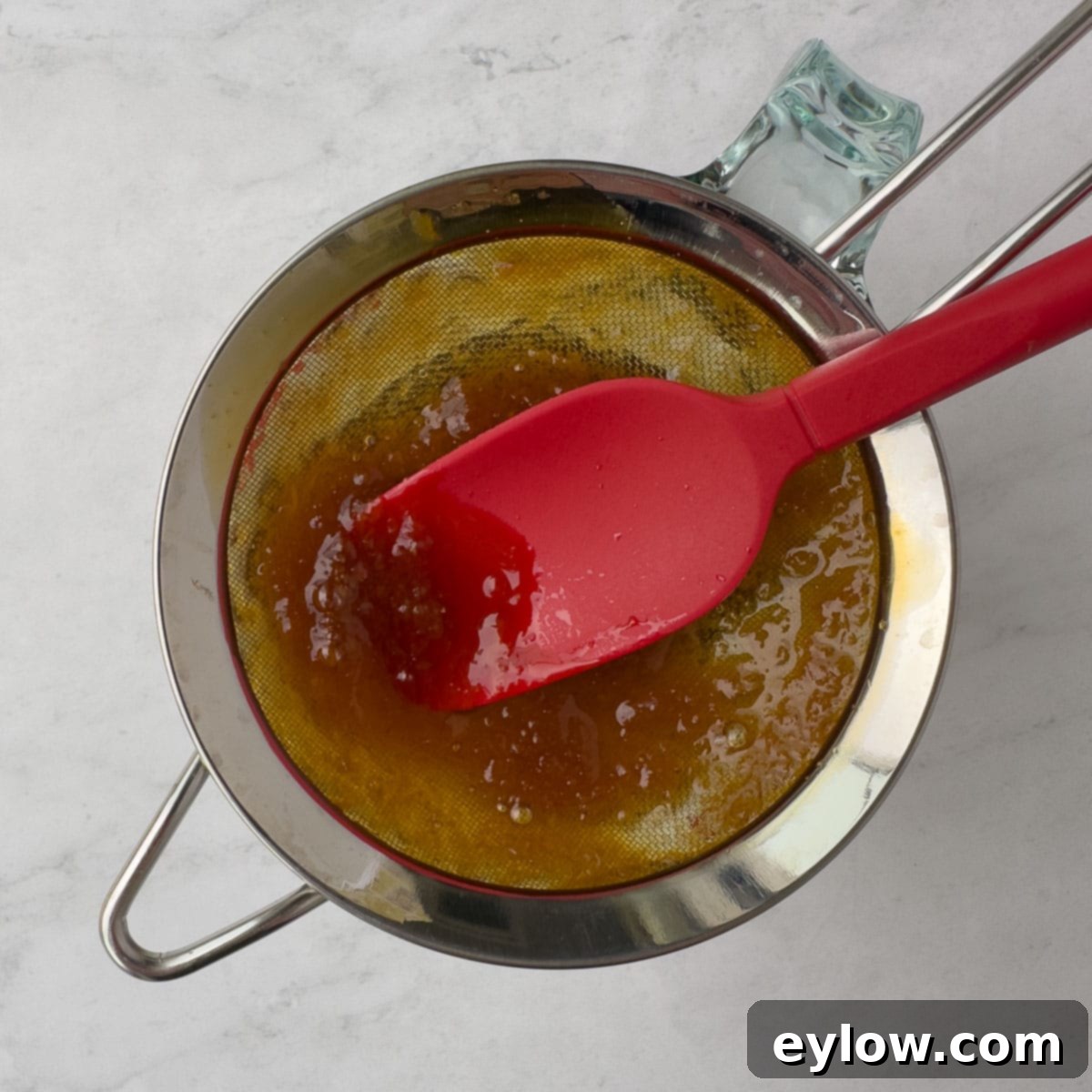
- Step 4: For a silky-smooth teriyaki sauce, immediately pour the hot sauce through a fine-mesh strainer into a clean glass jar or measuring cup. This removes any finely chopped garlic or ginger bits, resulting in an impeccably smooth glaze. Discard the strained aromatics.
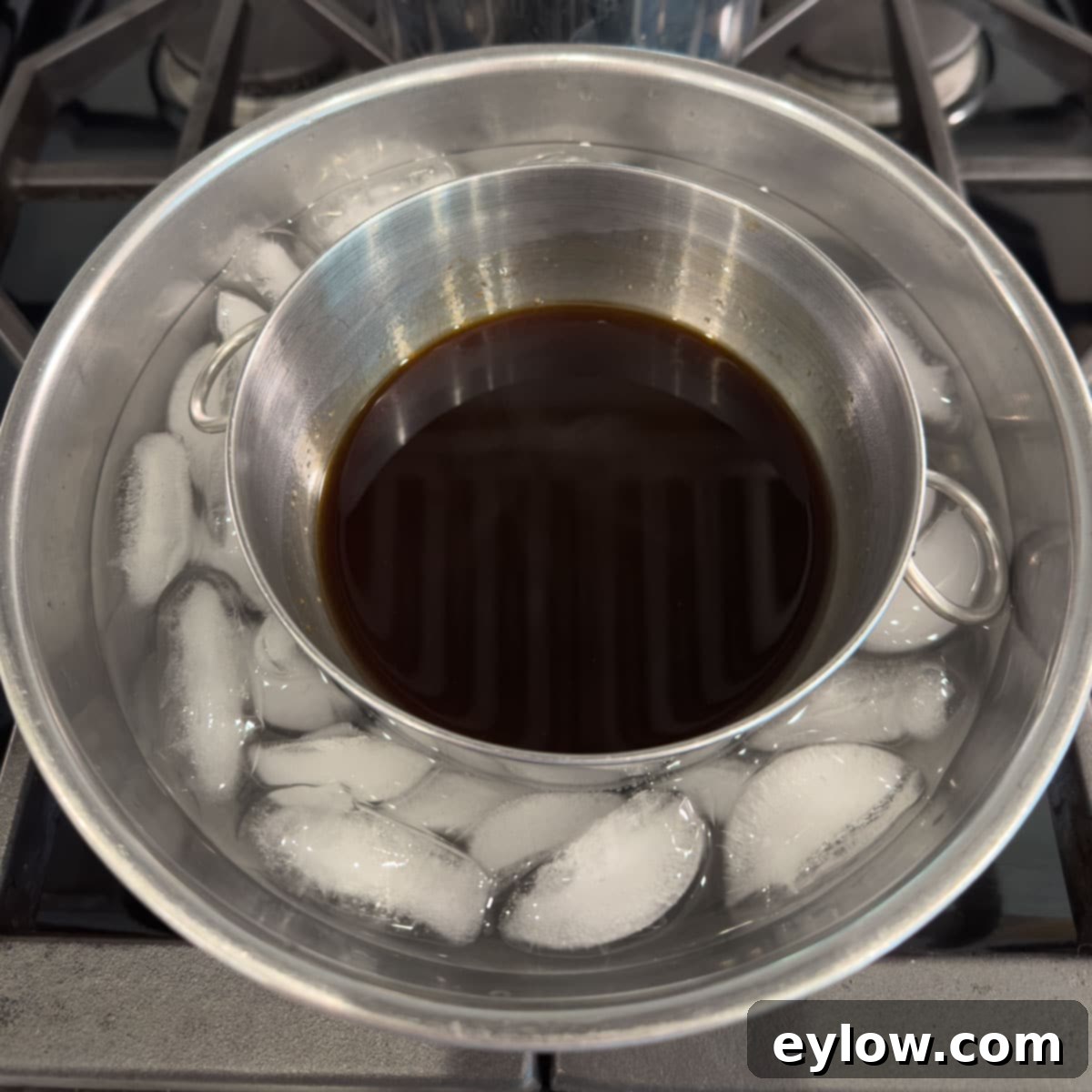
- Step 5: To use the sauce immediately, place the jar in an ice bath, stirring occasionally, until it cools down. If preparing ahead, simply allow it to cool completely at room temperature before refrigerating.
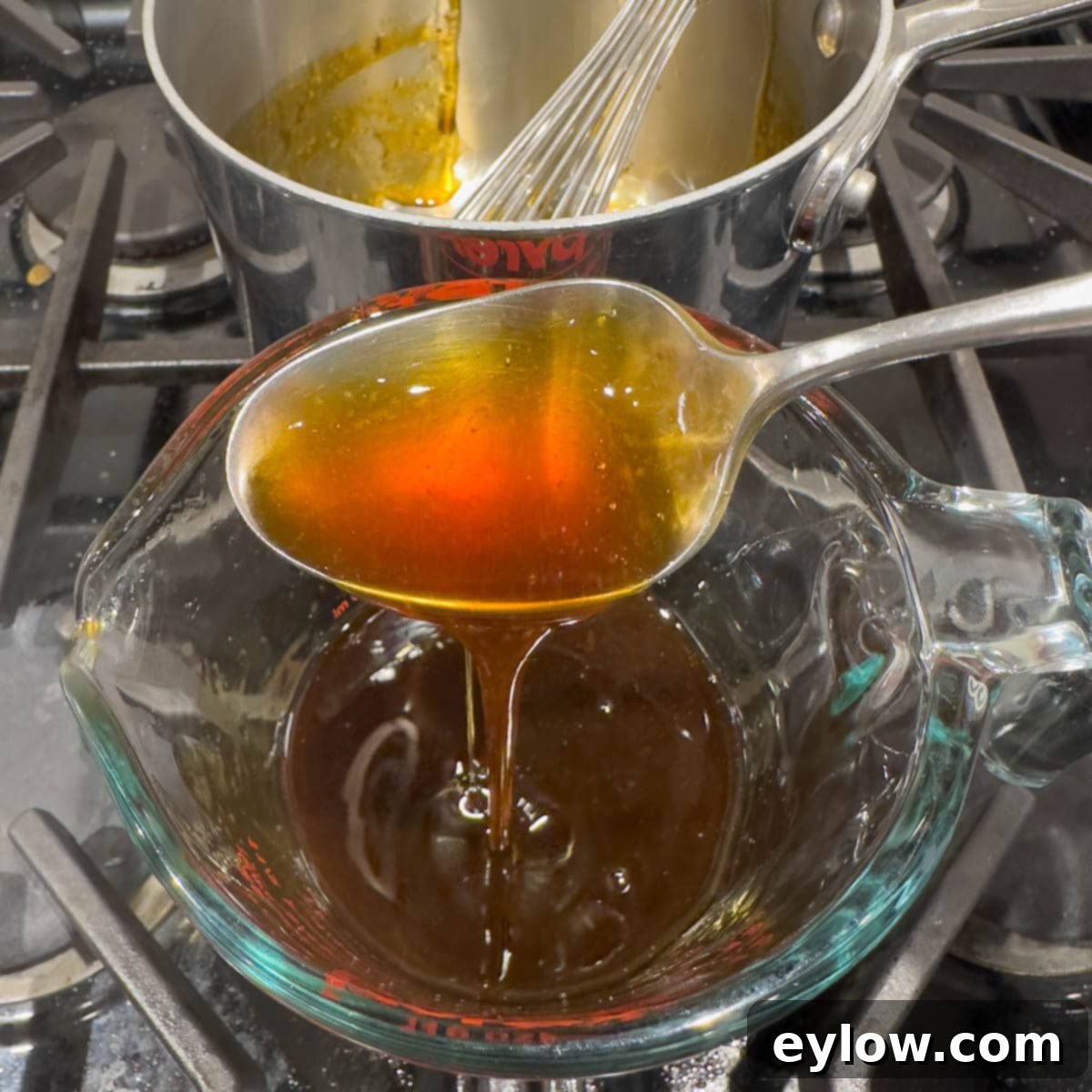
- Step 6: Behold your perfectly finished, rich, and flavorful homemade teriyaki sauce.
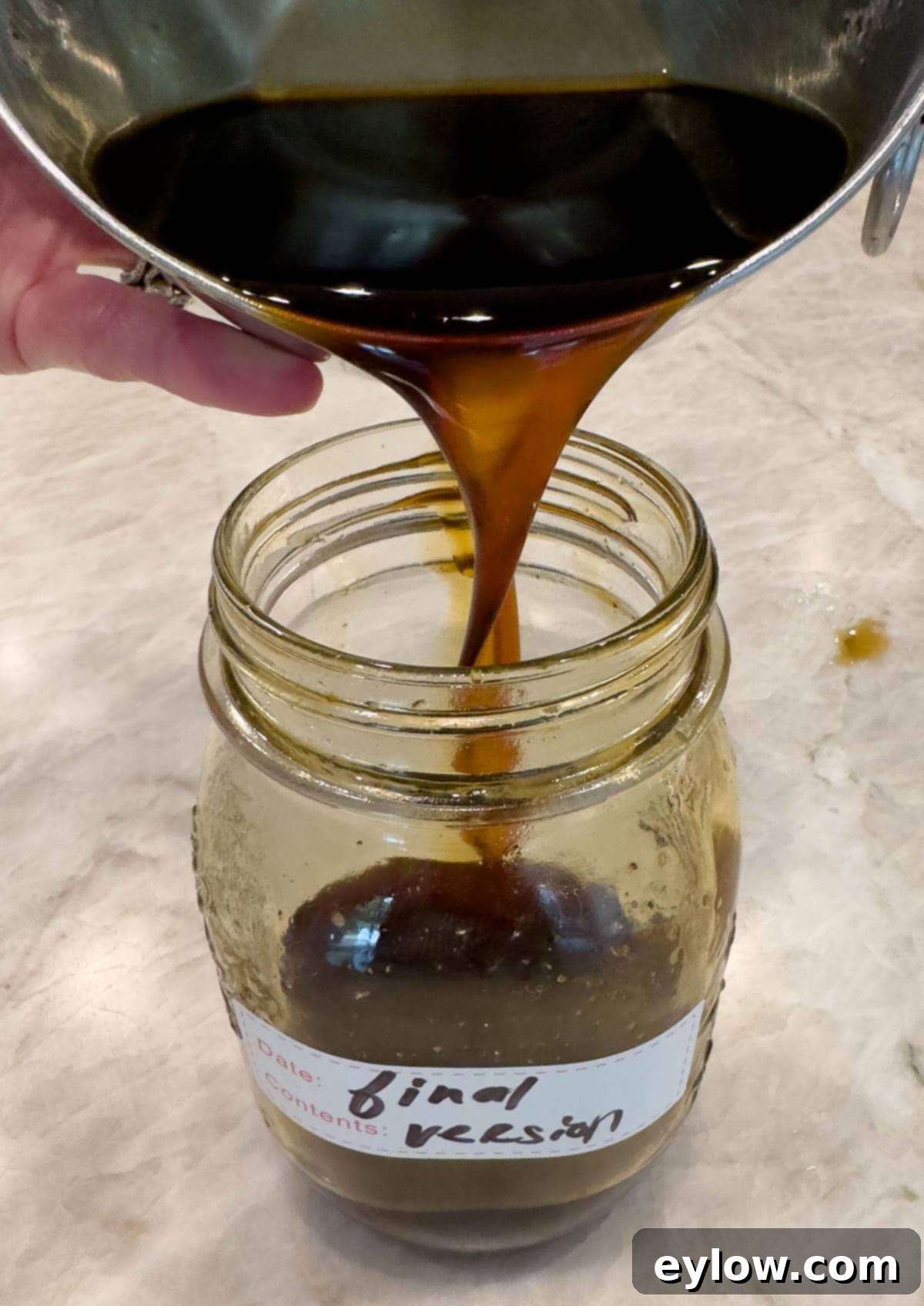
Step 7: Marinate the Chicken. Arrange the chicken thighs in a single layer within a shallow casserole dish or place them in a sturdy ziploc bag. Pour ½ to ¾ cup of the cooled teriyaki sauce over the chicken, ensuring each piece is thoroughly coated. Marinate for a minimum of 1 hour at room temperature on your countertop, or for a deeper infusion of flavor, marinate in the refrigerator for up to overnight. Remember to discard any unused marinade that has been in contact with raw chicken for food safety.

Step 8: Prepare for Baking. Preheat your oven to 375°F (190°C). Position an oven rack on the second level from the top, which will allow for optimal browning later. Line a rimmed baking sheet (half sheet size is ideal) with aluminum foil for easy cleanup. Remove the marinated chicken thighs from their sauce, letting any excess drip off, and arrange them in a single layer on the foil-lined baking sheet, top side up. Discard any remaining marinade used with raw chicken.

Step 9: Bake and Broil for Perfection. Bake the chicken for approximately 12 minutes. After this initial bake, turn on your oven’s broiler to finish cooking and achieve that beautiful, rich brown color and caramelized crust on the teriyaki chicken thighs. Keep a close eye on the chicken during broiling, as the sugar in the sauce can burn quickly. You can brush or drizzle a little extra teriyaki sauce over the chicken during the last few minutes of broiling, if desired, for an even deeper glaze. Since chicken thighs are relatively thin, they cook quite fast. Ensure the chicken reaches an internal temperature of 165°F (74°C) using a meat thermometer for food safety.
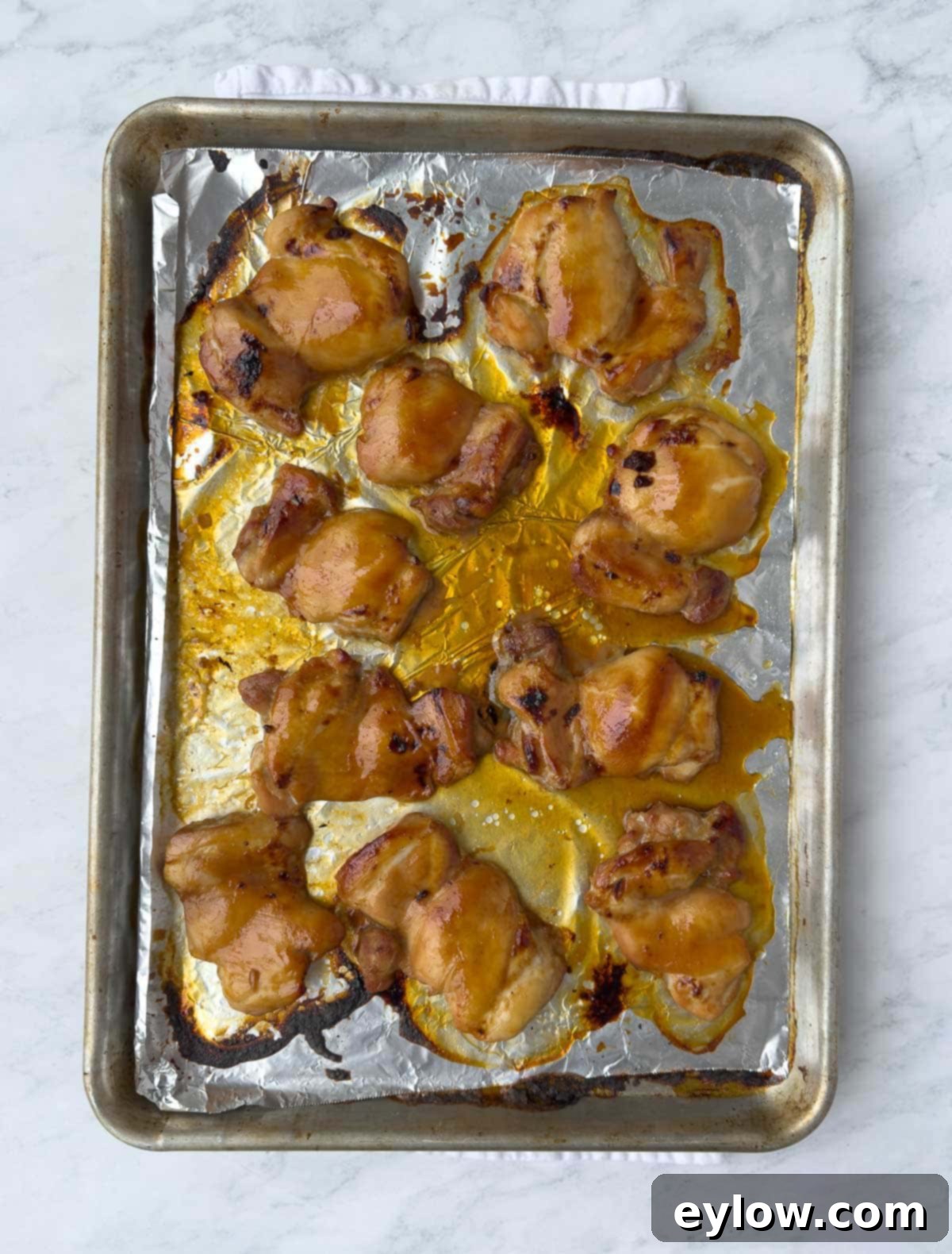
Step 10: Slice and Serve. Once cooked, remove the chicken from the oven and let it rest for a few minutes. To serve these magnificent teriyaki chicken thighs, slice the meat into thin, even strips, typically about ½ inch thick, cutting along the longer side of the thigh. Arrange the slices artfully on a serving platter, and then generously drizzle with more of your homemade teriyaki sauce. This not only enhances the flavor but also adds a beautiful, glossy sheen, making your dish visually stunning and incredibly delicious.
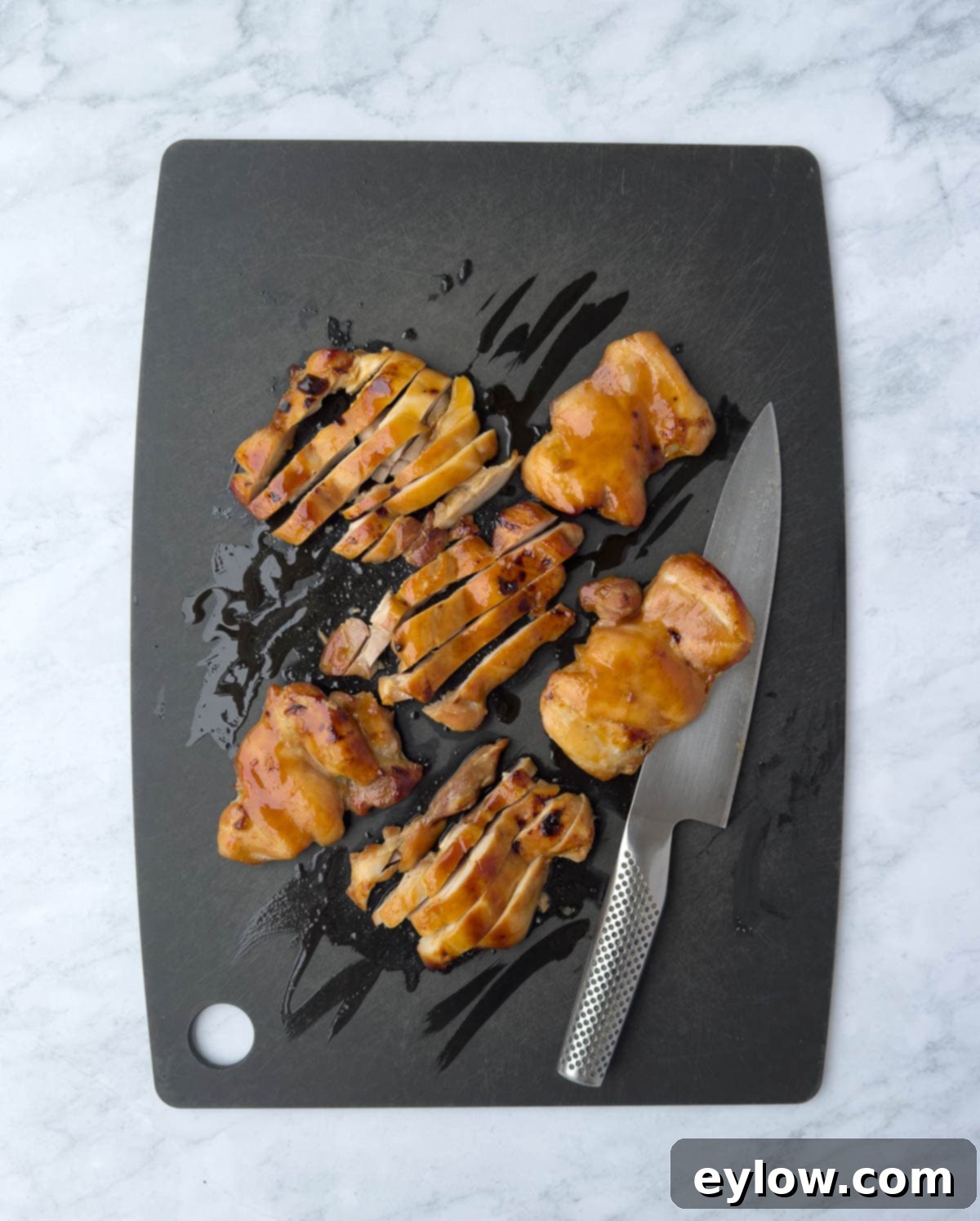
Chef’s Note: The True Value of Homemade Teriyaki Sauce. Why go through the minimal effort of making teriyaki sauce from scratch? The primary reason is health and ingredient control. Most commercially bottled teriyaki sauces and many takeout versions are unfortunately laden with undesirable ingredients such as high fructose corn syrup, excessive sodium, refined sugars, monosodium glutamate (MSG), genetically modified (GMO) ingredients, and artificial preservatives. By making your own, you have full command over what goes into your meal, ensuring it’s made with fresh, wholesome ingredients and free from questionable additives. This recipe is so quick and straightforward that the benefits of a cleaner, more delicious sauce far outweigh the convenience of a pre-made bottle.

Serving Suggestions for Your Teriyaki Feast
These flavorful teriyaki chicken thighs are incredibly versatile and pair beautifully with a variety of sides, allowing you to create a complete and satisfying meal. The classic pairing is serving them over a bed of warm white or brown rice, which perfectly absorbs the delicious sauce. Beyond rice, consider:
- Steamed Vegetables: Simple steamed broccoli, broccolini, crisp snap peas, zucchini, tender asparagus, or sliced carrots all make excellent and healthy accompaniments. Their natural sweetness and crunch provide a refreshing contrast to the rich chicken.
- Quick Sautéed Greens: For something speedy, try my simple 2-minute broccolini sautéed with a touch of garlic, or explore seasonal options like stir-fried bell peppers, mushrooms, or bok choy.
- Roasted Vegetables: Roasting brings out the natural sweetness of vegetables. Consider roasted root vegetables like sweet potatoes or parsnips, or more delicate options like Brussels sprouts or green beans tossed in a light oil.
- Noodle Bowls: For a heartier meal, serve the sliced chicken over a bed of ramen, udon, or soba noodles, perhaps with some added vegetable stir-fry.
- Fresh Salad: Keep it light and refreshing with a crisp green salad, dressed with a light vinaigrette or a ginger-sesame dressing, especially delightful on warmer evenings.
- Garnishes: Don’t forget the finishing touches! A sprinkle of toasted sesame seeds adds a lovely nutty flavor and texture, while diagonally sliced green onions provide a fresh, mild oniony bite and visual appeal. A dash of chili flakes can add a subtle kick if you enjoy a bit of heat.
And remember, always have extra homemade teriyaki sauce on the side for dipping or drizzling, allowing everyone to customize their meal to their liking!
Storage Tips for Leftovers and Make-Ahead Meals
Planning ahead makes weeknights easier. Here’s how to store your teriyaki chicken and sauce:
- Homemade Teriyaki Sauce: Thanks to its sugar and salt content, your homemade teriyaki sauce will keep wonderfully in a sealed jar or airtight container in the refrigerator for about 2 weeks. While some sources suggest it freezes well, I haven’t personally tested this. However, given how incredibly quick and easy it is to prepare, whipping up a fresh batch whenever needed is always a simple option.
- Cooked Teriyaki Chicken Thighs: Leftover cooked chicken should be stored in an airtight container in the refrigerator for 3-4 days.
- Reheating: Gently reheat the chicken in a microwave or in a pan over medium-low heat with a splash of water or extra teriyaki sauce to prevent it from drying out.
Recipe FAQs: Your Questions Answered
Absolutely! One of the greatest advantages of using dark meat chicken thighs is their inherent ability to become more tender and juicy with cooking. Unlike leaner chicken breasts, which can dry out quickly if overcooked, chicken thighs contain more fat and connective tissue. This composition allows them to remain incredibly moist and succulent, even when cooked slightly longer. If you generally prefer white meat, I highly encourage you to try this recipe with thighs; their tender, rich flavor profile might just change your mind about dark meat!
Teriyaki sauce achieves its signature thick, glossy consistency primarily through the addition of a starch. Common choices include cornstarch or arrowroot starch. A very small amount is sufficient. The starch is first mixed with an equal part of cold water to form a smooth mixture known as a “slurry.” This slurry is then gradually whisked into the simmering teriyaki sauce. As the sauce continues to cook for 1-2 minutes, the starch gelatinizes, causing the sauce to thicken beautifully. Another method to thicken sauce is through reduction, where the liquid is simmered for an extended period to evaporate water and concentrate flavors. However, using a starch slurry is much faster and helps maintain the desired volume of the sauce.
The distinction between teriyaki marinade and teriyaki sauce typically lies in their consistency and intended use. A teriyaki marinade is generally a thinner liquid, specifically formulated to penetrate and flavor meats like chicken or steak before cooking. It’s designed for absorption rather than coating. In contrast, teriyaki sauce is a thicker, more viscous condiment. This thicker consistency makes it suitable for a wider range of applications: it can be used for marinating, basting meats during cooking, glazing for a shiny finish, and serving as a delicious dipping sauce at the table. The thicker texture of teriyaki sauce is achieved either by incorporating a starch (like cornstarch) or by reducing the sauce through simmering, processes not typically applied to a marinade.
Yes, absolutely! This recipe is excellent for meal prepping. You can make the teriyaki sauce up to two weeks in advance and store it in the refrigerator. The chicken thighs can be marinated overnight in the refrigerator, allowing you to simply pop them into the oven when you’re ready to cook. Cooked teriyaki chicken also reheats well, making it perfect for packed lunches or quick dinners throughout the week.
The most reliable way to ensure chicken thighs are fully cooked and safe to eat is by using an instant-read meat thermometer. Insert the thermometer into the thickest part of the thigh, avoiding the bone. The internal temperature should register 165°F (74°C). Chicken thighs often maintain a slight pinkness near the bone even when fully cooked due to myoglobin, so temperature is a better indicator than color alone.
Explore More Terrific Chicken Recipes
If you’ve enjoyed the rich flavors and tender texture of these teriyaki chicken thighs, you’ll love exploring other delightful chicken recipes. For another delicious and comforting meal using chicken thighs, try my Braised Italian Chicken Thighs, packed with Mediterranean-inspired flavors.
- Roast Split Chicken Breast
- Curry Chicken With Thighs
- Grilled Hoisin Chicken Skewers
- Easy Chicken Cutlets
⭐️Did You Make This Recipe?
If you tried these delicious teriyaki chicken thighs, we’d love to hear from you! Please share your thoughts in the comments section below. Your feedback is incredibly valuable, and we enjoy hearing about your cooking experiences. If you absolutely loved this recipe, please consider giving it a 5-star rating! Your ratings and reviews truly help other home cooks discover and enjoy these recipes.
📖 Recipe
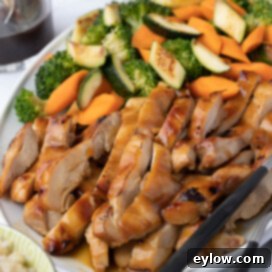
Teriyaki Chicken Thighs
Sally Cameron
Pin Recipe
Equipment
- Rimmed baking sheet, half sheet size
- 2 quart pan
Ingredients
Teriyaki Sauce Recipe (Yield 12 ounces)
- ¾ cup low sodium tamari or soy sauce (tamari is gluten-free)
- ½ cup Mirin (See notes below)
- 2-3 tablespoons dry sake (optional, buy a small bottle)
- 1 ½ tablespoons brown sugar (or monk fruit)
- 1 ½ tablespoon cold water (to make a slurry)
- 1 ½ tablespoons cornstarch or arrowroot starch
- 1-2 garlic cloves (finely chopped or zested)
- 1-2 teaspoons finely grated ginger (or jar puree)
Chicken
- 2 pounds boneless, skinless chicken thighs (trimmed of extra fat)
- 1 tablespoon chopped green onions for garnish (optional)
Instructions
Make the Teriyaki Sauce
-
Combine tamari (or soy sauce), mirin, brown sugar, sake, ginger, and garlic in a small (2-quart) saucepan and place on the stovetop. Bring to a simmer over medium heat.
While it’s heating, make a slurry by adding the cornstarch to the water in a small bowl, stirring until smooth. When the teriyaki reaches a simmer, whisk in the slurry, turn the heat down if needed, and cook for 1-2 minutes to allow it to thicken and get rid of any raw starch taste.
- Pour the cooked teriyaki sauce through a fine-mesh strainer into a large glass jar or measuring cup. Discard the bits of garlic and ginger. Place the jar in an ice bath to quickly cool the hot sauce for immediate use or refrigerate if making ahead of time.
Marinate the Chicken Thighs
- Add the chicken thighs to either a flat casserole dish or a resealable plastic bag and pour in ½ cup to ¾ cup of the cooled teriyaki sauce, turning the chicken over to coat it thoroughly. Marinate for 1 hour on the countertop at room temperature, or for a deeper flavor, marinate for longer, up to overnight, in the refrigerator.
Bake the Chicken Thighs
- Pre-heat the oven to 375°F (190°C) and position an oven rack on the second level down from the top. Line a rimmed baking sheet (half sheet size) with aluminum foil. Remove the chicken thighs from the marinade and lay them flat, in a single layer, on the foil (top side up). Discard any teriyaki sauce that has been used for marinating raw chicken.
- Lay the chicken thighs top side up on the baking tray and bake for 12 minutes. Then, turn on the broiler to finish baking and to brown the teriyaki chicken thighs, creating a beautiful caramelized glaze. Brush or drizzle with a little extra sauce if desired during broiling. Watch the chicken carefully as the sugar in the sauce can burn if left under the broiler for too long. Thighs are relatively thin, so they cook quickly. The internal temperature of the thighs should reach 165°F (74°C).
- To serve, slice the chicken on the longer side into approximately ½-inch pieces. Arrange on a platter, drizzle with more of your homemade sauce for extra flavor and shine, and serve immediately.
Notes
The teriyaki sauce breakdown per ounce (approximately 2 tablespoons) is as follows: 687mg sodium, 5mg sugar, 9 grams carbohydrates, 1 gram protein, 64 mg potassium, and 43 kcals. This helps in understanding the sauce’s contribution.
Tamari is a fantastic gluten-free and wheat-free alternative to traditional soy sauce. I highly recommend San-J 25% or 50% Low Sodium Tamari, which is also non-GMO. For individuals avoiding soy, their No-Soy Tamari is a delicious and suitable option.
Mirin is a Japanese cooking wine fermented from rice, essential for authentic flavor and glaze. Always read labels carefully when purchasing to avoid “aji-mirin” (fake mirin) which often contains corn syrup and other additives. I exclusively use the Eden Foods brand for its high-quality ingredients.
Variations:
For honey teriyaki: Add 1 tablespoon of mild honey, to taste, or substitute it entirely for the brown sugar for a distinct honey flavor.
For sesame teriyaki: Incorporate 1 to 2 tablespoons of toasted sesame oil into the teriyaki mixture before cooking for a nutty aroma. Garnish with sesame seeds when serving.
For grain-free: Substitute cornstarch with arrowroot starch to ensure the recipe remains grain-free.
Nutrition
Carbohydrates: 19g
Protein: 32g
Fat: 6g
Saturated Fat: 2g
Polyunsaturated Fat: 1g
Monounsaturated Fat: 2g
Trans Fat: 0.03g
Cholesterol: 144mg
Sodium: 1509mg
Potassium: 500mg
Fiber: 0.3g
Sugar: 10g
Vitamin A: 46IU
Vitamin C: 1mg
Calcium: 30mg
Iron: 2mg
Tried this recipe?
Let us know how it was with a comment and leave a star rating!
